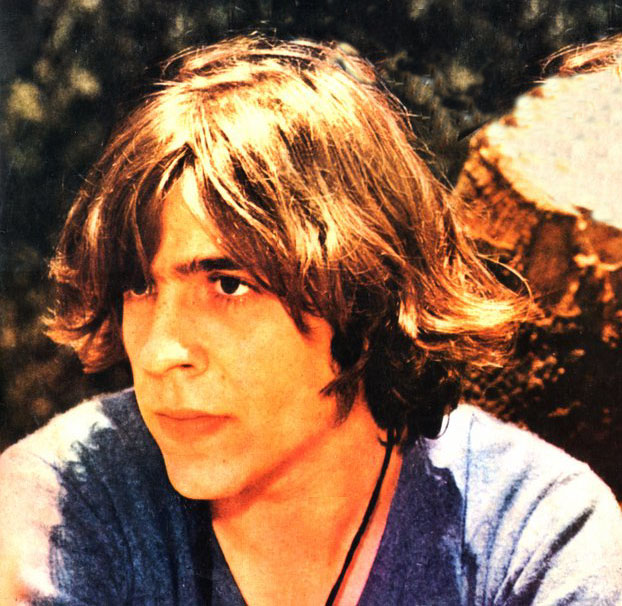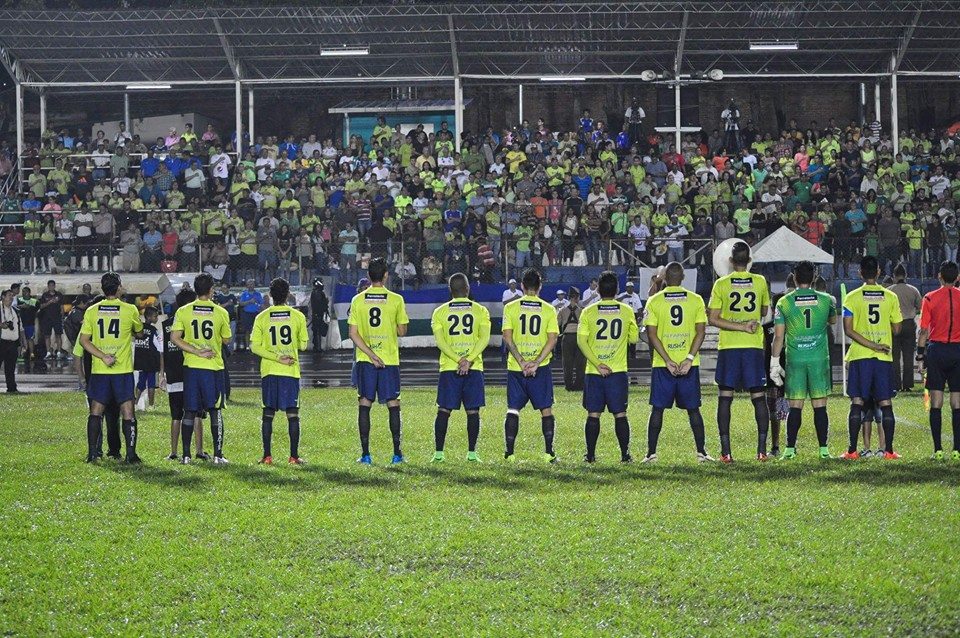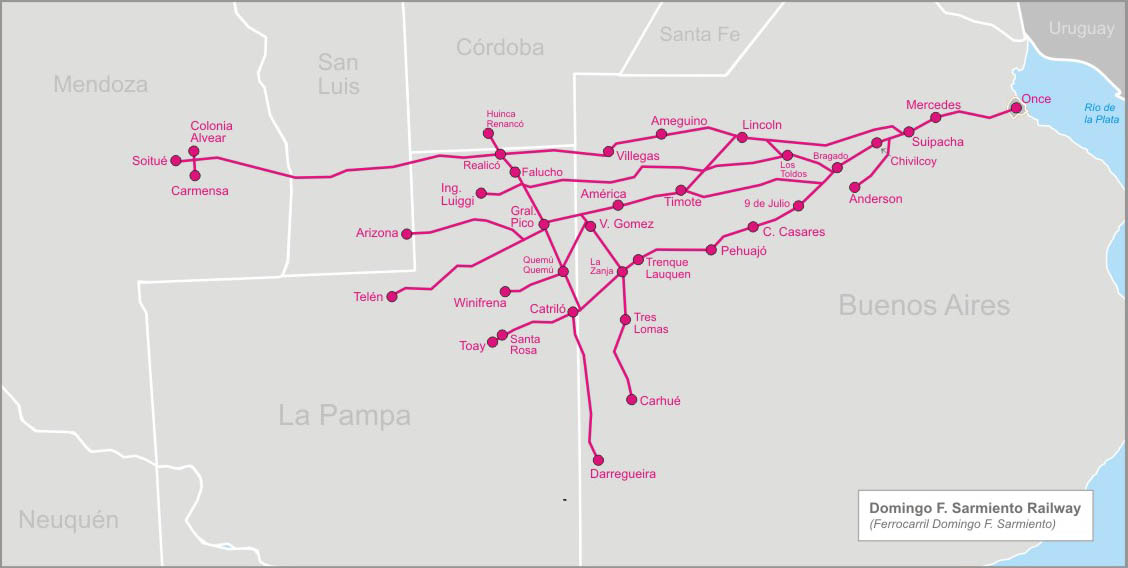|
Villa Urquiza
Villa Urquiza is a barrio or neighborhood of Buenos Aires, Argentina. It is located between the barrios of Villa Pueyrredón, Belgrano, Villa Ortúzar, Coghlan, Saavedra and Agronomía. Its limits are the streets and avenues Constituyentes, Crisólogo Larralde, Galván, Núñez, Tronador, Roosevelt, Rómulo S. Naón and La Pampa. It is a residential neighborhood with both old houses and apartment buildings, quiet streets and a few crowded, high-traffic avenues. It has several parks that make it very pleasant. During the summer, it is not uncommon to see neighbors comfortably sitting on chairs on the sidewalk, chatting with each other. It is also home of several institutions of importance to the Buenos Aires culture, such as the tango and milonga ballrooms Sunderland and Club Sin Rumbo, Argentine rock pioneer Litto Nebbia's Melopea Records, and the winner of three in a row futsal metropolitan tournaments, Club Pinocho. History The founder of Villa Urquiza was Francisco Se ... [...More Info...] [...Related Items...] OR: [Wikipedia] [Google] [Baidu] |
Barrios And Communes Of Buenos Aires
The city of Buenos Aires Buenos Aires ( or ; ), officially the Autonomous City of Buenos Aires ( es, link=no, Ciudad Autónoma de Buenos Aires), is the capital and primate city of Argentina. The city is located on the western shore of the Río de la Plata, on South ... is formally divided in 48 '' barrios'' (neighborhoods), grouped into 15 ''comunas'' (communes), which are defined as "units of decentralized political and administrative management governed by designated residents". The city proper (excluding the suburbs and exurbs that form Greater Buenos Aires), had 2,891,082 inhabitants as of 2010. Overview Sanitary regions The borders of the sanitary regions are aligned with the borders of the communes. * Region 1: C1, C3, C4 * Region 2: C7, C8, C9 * Region 3: C5, C6, C10, C11, C15 * Region 4: C2, C12, C13, C14 References External links Map of Buenos Aires' neighborhoods and communes {{Portal, Argentina Geography of Buenos Aires ... [...More Info...] [...Related Items...] OR: [Wikipedia] [Google] [Baidu] |
Litto Nebbia
Félix Francisco "Litto" Nebbia Corbacho (born 21 July 1948) is an Argentine singer-songwriter, musician and producer prominent in the development of Argentine rock. Life and work Félix Francisco Nebbia Corbacho was born in Rosario, Santa Fe to Martha and Félix Nebbia (two sons of Italian immigrants), in 1948. His parents were struggling musicians, though during his early teens, ''Litto'' left secondary school to join a friend, keyboardist Ciro Fogliatta, in a band ("Wild Cats"). The duo moved to Buenos Aires in 1963, and lived hand-to-mouth in a Balvanera ward tenement. They appeared in a television show, ''Escala Musical'', a number of times, and became regulars at a popular neighborhood recital hall, ''La Cueva''. Nebbia and Fogliatta formed "Los Gatos" in 1966. The group became known for their all-night performances, and composed most of their own songs, many in the well-known neighborhood café, "La Perla del Once" (facing Plaza Miserere). One such composition, '' La ... [...More Info...] [...Related Items...] OR: [Wikipedia] [Google] [Baidu] |
Line B (Buenos Aires)
Line B of the Buenos Aires Underground runs from Leandro N. Alem to Juan Manuel de Rosas in Villa Urquiza. Line B opened to the public on 17 October 1930. In recent years, it has held the title of being the most used line of the Buenos Aires Underground, and its patronage has increased even more after the opening of a section of tunnel between Los Incas station in the neighbourhood of Parque Chas and a shopping centre in Villa Urquiza. It was the first line in Buenos Aires whose stations had turnstiles and moving stairways. It is the only line that uses third rail current collection, while the rest of the Underground lines collect electric current from overhead lines, although there has been ongoing conversion to overhead lines to incorporate new rolling stock. Its gauge of is the same as the rest of the Buenos Aires underground system. The rolling stock currently used on the B line are former Tokyo Metro (formerly Eidan Subway) 300/500/900 stock, which was used on Marunouc ... [...More Info...] [...Related Items...] OR: [Wikipedia] [Google] [Baidu] |
Buenos Aires Metro
The Buenos Aires Underground ( es, Subterráneo de Buenos Aires, links=no), locally known as Subte (), is a rapid transit system that serves the area of the city of Buenos Aires, Argentina. The first section of this network (Plaza de Mayo–Plaza Miserere) opened in 1913, making it the 13th subway in the world and the first underground railway in Latin America, the Southern Hemisphere, and the Spanish-speaking world, with the Madrid Metro opening five years later, in 1919. As of 2022, Buenos Aires is the only Argentine city with a metro system. Currently, the underground network's six lines—A, B, C, D, E, and H—comprise of routes that serve 90 stations. The network is complemented by the Premetro line, and the Urquiza suburban line, with 17 more stations in total. Traffic on lines moves on the left because Argentina drove on the left at the time the system opened. Over a million passengers use the network, which also provides connections with the city's extensive commu ... [...More Info...] [...Related Items...] OR: [Wikipedia] [Google] [Baidu] |
Ferrocarril General Bartolomé Mitre
Futbol Club Sonsonate is a Salvadoran professional football club based in Sonsonate, El Salvador. The club plays its home games at Estadio Anna Mercedes Campos, a stadium located in the City suburb of Sonsonate, Sonsonate, since 2009. The team is currently led by head coach Uruguayan Rubén da Silva. History On 9 September 2009, César Antonio Contreras and Miguel Antonio Castillo along with Pedro Antonio Contreras and with the support of the Sonsonate department (in particular the head of the department José Roberto Aquino) were able to re-activate Sonsonate from defunct status and begin their time in the modern era. The club competed in the Tercera División for a few years, before winning promotion to the Segunda División in 2011, under the direction of Ricardo Andrés Navarro. Despite strong club following and several finals appearances the club failed to win either the Segunda Division Apertura or Clausura title to achieve promotion in the Primera Division. However, ... [...More Info...] [...Related Items...] OR: [Wikipedia] [Google] [Baidu] |
Justo José De Urquiza
Justo José de Urquiza y García (; October 18, 1801 – April 11, 1870) was an Argentine general and politician who served as president of the Argentine Confederation from 1854 to 1860. Life Justo José de Urquiza y García was born in Entre Ríos, the son of José Narciso de Urquiza Álzaga, born in Castro Urdiales, Spain, and María Cándida García González, a Creole of Buenos Aires. He was governor of Entre Ríos during the government of Juan Manuel de Rosas, governor of Buenos Aires with powers delegated from the other provinces. Rosas presented a resignation to his charge frequently, but only as a political gesture, counting that the other governments would reject it. However, in 1851, resentful of the economic and political dominance of Buenos Aires, Urquiza accepted Rosas' resignation and resumed for Entre Rios the powers delegated in Buenos Aires. Along with the resuming of international commerce without passing through the port of Buenos Aires, Urquiza ... [...More Info...] [...Related Items...] OR: [Wikipedia] [Google] [Baidu] |
Entre Ríos Province
Entre Ríos (, "Between Rivers") is a central province of Argentina, located in the Mesopotamia region. It borders the provinces of Buenos Aires (south), Corrientes (north) and Santa Fe (west), and Uruguay in the east. Its capital is Paraná (250,000 inhabitants), which lies on the Paraná River, opposite the city of Santa Fe. Together with Córdoba and Santa Fe, since 1999, the province is part of the economic-political association known as the Center Region. History The first inhabitants of the area that is now Entre Ríos were the Charrúa and Chaná who each occupied separate parts of the region. Spaniards entered in 1520, when Rodríguez Serrano ventured up the Uruguay River searching for the Pacific Ocean. The first permanent Spanish settlement was erected in the current La Paz Department at the end of the 16th century. As governor of Asunción first and then of Buenos Aires, Hernandarias conducted expeditions to Entre Ríos unexplored lands. Juan de Garay, af ... [...More Info...] [...Related Items...] OR: [Wikipedia] [Google] [Baidu] |
Land Reclamation
Land reclamation, usually known as reclamation, and also known as land fill (not to be confused with a waste landfill), is the process of creating new land from oceans, seas, riverbeds or lake beds. The land reclaimed is known as reclamation ground or land fill. In some jurisdictions, including parts of the United States, the term "reclamation" can refer to returning disturbed lands to an improved state. In Alberta, Canada, for example, reclamation is defined by the provincial government as "The process of reconverting disturbed land to its former or other productive uses." In Oceania, it is frequently referred to as land rehabilitation. History One of the earliest large-scale projects was the Beemster Polder in the Netherlands, realized in 1612 adding of land. In Hong Kong the Praya Reclamation Scheme added of land in 1890 during the second phase of construction. It was one of the most ambitious projects ever taken during the Colonial Hong Kong era.Bard, Solomon. 002 ... [...More Info...] [...Related Items...] OR: [Wikipedia] [Google] [Baidu] |
Tronador Street, Buenos Aires
Tronador ( es, Cerro Tronador) is an extinct stratovolcano in the southern Andes, located along the border between Argentina and Chile, near the Argentine city of Bariloche. The mountain was named ''Tronador'' (Spanish for "Thunderer") by locals in reference to the sound of falling seracs. With an altitude of , Tronador stands more than 1,000 m above nearby mountains in the Andean massif, making it a popular mountaineering destination. Located inside two national parks, Nahuel Huapi in Argentina and Vicente Pérez Rosales in Chile, Tronador hosts a total of eight glaciers, which are currently retreating due to warming of the upper troposphere.Bown, Francisca. 2004. Cambios climáticos en la Región de Los Lagos y respuestas recientes del Glaciar Casa Pangue (41º08’S). Tesis para optar al grado de Magíster en Geografía. Universidad de Chile. Geography and geology Cerro Tronador is in the Wet Andes, a zone of high precipitation of both snow and rain. The humid temperate climat ... [...More Info...] [...Related Items...] OR: [Wikipedia] [Google] [Baidu] |
Buenos Aires Western Railway
The Buenos Aires Western Railway (BAWR) (in Spanish: Ferrocarril Oeste de Buenos Aires), inaugurated in the city of Buenos Aires on 29 August 1857, was the first railway built in Argentina and the start of the extensive rail network which was developed over the following years. The locomotive ''La Porteña'', built by the British firm EB Wilson & Company in Leeds, was the first train to travel on this line. The route initially measured , stretching from Del Parque station (now the site of the Teatro Colón) to Floresta station, which at that time was located in San José de Flores village, but is now within Buenos Aires city limits. The rails were laid along what are now Lavalle, Enrique S. Discépolo, Avenida Corrientes and Avenida Pueyrredón, and then followed the route of the current Domingo Sarmiento Railway line towards Floresta. Although the construction of this line was proposed by a group of private individuals known as the "Sociedad del Camino-Ferrocarril al Oest ... [...More Info...] [...Related Items...] OR: [Wikipedia] [Google] [Baidu] |
Paraguay
Paraguay (; ), officially the Republic of Paraguay ( es, República del Paraguay, links=no; gn, Tavakuairetã Paraguái, links=si), is a landlocked country in South America. It is bordered by Argentina to the south and southwest, Brazil to the east and northeast, and Bolivia to the northwest. It has a population of seven million, nearly three million of whom live in the capital and largest city of Asunción, and its surrounding metro. Although one of only two landlocked countries in South America (Bolivia is the other), Paraguay has ports on the Paraguay and Paraná rivers that give exit to the Atlantic Ocean, through the Paraná-Paraguay Waterway. Spanish conquistadores arrived in 1524, and in 1537, they established the city of Asunción, the first capital of the Governorate of the Río de la Plata. During the 17th century, Paraguay was the center of Jesuit missions, where the native Guaraní people were converted to Christianity and introduced to European culture. ... [...More Info...] [...Related Items...] OR: [Wikipedia] [Google] [Baidu] |
Paraguayan War
The Paraguayan War, also known as the War of the Triple Alliance, was a South American war that lasted from 1864 to 1870. It was fought between Paraguay and the Triple Alliance of Argentina, the Empire of Brazil, and Uruguay. It was the deadliest and bloodiest inter-state war in Latin American history. Paraguay sustained large casualties, but the approximate numbers are disputed. Paraguay was forced to cede disputed territory to Argentina and Brazil. The war began in late 1864, as a result of a conflict between Paraguay and Brazil caused by the Uruguayan War. Argentina and Uruguay entered the war against Paraguay in 1865, and it then became known as the "War of the Triple Alliance". After Paraguay was defeated in conventional warfare, it conducted a drawn-out guerrilla resistance, a strategy that resulted in the further destruction of the Paraguayan military and the civilian population. Much of the civilian population lost their lives due to battle, hunger, and disease. The guer ... [...More Info...] [...Related Items...] OR: [Wikipedia] [Google] [Baidu] |






